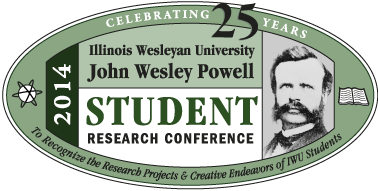Case Study: The Uses of Code-switching Among One Bilingual Spanish-speaker in Central Illinois
Submission Type
Event
Expected Graduation Date
2014
Location
Room E105, Center for Natural Sciences, Illinois Wesleyan University
Start Date
4-12-2014 10:00 AM
End Date
4-12-2014 11:00 AM
Disciplines
Spanish and Portuguese Language and Literature
Abstract
Many researchers have investigated the various uses of code-switching among bilingual Spanish-speakers in urban cities with large Hispanic populations; however, there are few studies carried out in rural areas that also have high populations of Spanish-speakers. This case study seeks to identify the purposes of code-switching based on the analysis of transcriptions of three, fifteen minute, informal conversations with bilingual speakers of a variety of ages led by one bilingual Spanish speaker in Central Illinois, similar to a study conducted by Valdés (1982). From this study, the results may indicate the purposes of code-switching, provide additional information about bilingual Spanish speakers in rural areas of the United States, and may assist in changing the attitudes of those who believe code-switching indicates a lack of proficiency in either language.
Valdés, Guadalupe. (1982). Social interaction and code-switching patterns: A case study of Spanish/English alternation. In Jon Amastae & Lucía Elías-Olivares (Eds.), Spanish in the United States: Sociolinguistic aspects (pp. 209-229). Cambridge: Cambridge University Press.
Case Study: The Uses of Code-switching Among One Bilingual Spanish-speaker in Central Illinois
Room E105, Center for Natural Sciences, Illinois Wesleyan University
Many researchers have investigated the various uses of code-switching among bilingual Spanish-speakers in urban cities with large Hispanic populations; however, there are few studies carried out in rural areas that also have high populations of Spanish-speakers. This case study seeks to identify the purposes of code-switching based on the analysis of transcriptions of three, fifteen minute, informal conversations with bilingual speakers of a variety of ages led by one bilingual Spanish speaker in Central Illinois, similar to a study conducted by Valdés (1982). From this study, the results may indicate the purposes of code-switching, provide additional information about bilingual Spanish speakers in rural areas of the United States, and may assist in changing the attitudes of those who believe code-switching indicates a lack of proficiency in either language.
Valdés, Guadalupe. (1982). Social interaction and code-switching patterns: A case study of Spanish/English alternation. In Jon Amastae & Lucía Elías-Olivares (Eds.), Spanish in the United States: Sociolinguistic aspects (pp. 209-229). Cambridge: Cambridge University Press.


